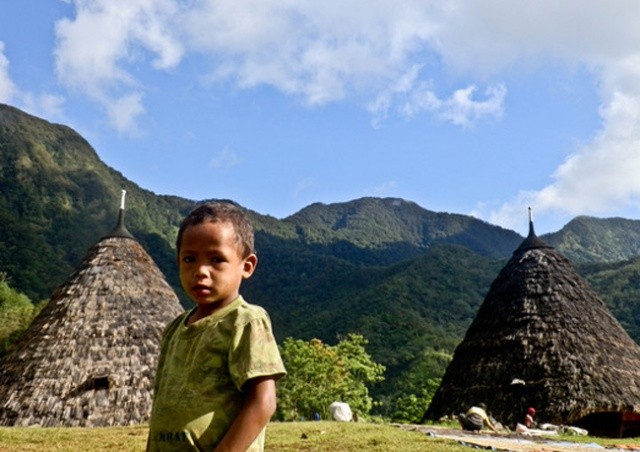Popular Reads
Top Results
Can't find what you're looking for?
View all search resultsPopular Reads
Top Results
Can't find what you're looking for?
View all search resultsSix villages of Indonesia keenly preserve ancient traditions
The cultural richness of Indonesia is still upheld in many villages of the nation. Here are seven villages that hold particularly dear their traditional values.
Change text size
Gift Premium Articles
to Anyone
I
ndonesia is a country made up of thousands of islands, multiple ethnicities and countless traditions. The cultural richness of the archipelago is still upheld in many villages of the nation.
Here are some villages around the country that hold dear their traditional values, as compiled by kompas.com:
Penglipuran
Located in Bangli, Penglipuran is one of the oldest villages on the island of Bali that is still standing today.
The village of Bali Aga and Bali Majapahit communities nestled 625 meters above sea level dates back to the 18th century.
The uniqueness of Penglipuran is the uniformity of house entrances. Another interesting aspect is the existence of hallways from one house to another that represent the interconnectedness and harmony in the lives of its people.
Read also: Three ancient villages to visit in Bali
Sade Lombok
When arriving at this village in Puju district, Central Lombok, visitors will see the homes of the Lombok natives of the Sasak tribe. These houses are made of wood and have thatched roofs.
An interesting aspect of this village is that every once in a while, the floors are covered with buffalo dung. A cultural tradition of the village is the kidnapping of newlywed couples.
Wae Rebo
A unique aspect of this well-managed tourist village is that there are seven very well-known houses in the shape of a cone.
When visiting here, visitors will only be able to spend the night within one of the seven cone-shaped homes, which have been standing for 19 generations and are known as Mbaru Niang. These traditional houses are made of wood, with thatched roofs that purse upward.
The architectural style of these homes is considered very traditional and unique.
Baduy
The indigenous Baduy village, also known as Kanekes village, is located in the Leuwidamar district of Lebak regency, Banten.
This village is known for maintaining ancient traditions. There are technically 65 hamlets within Kanekes, which are divided into the inner Baduy and outer Baduy. The latter consists of three hamlets named Cikartawana, Cibeo and Cikeusik.
When visiting Baduy, tourists can enjoy beautiful nature and local traditions. In inner Baduy, there are a number of regulations that are upheld strictly, such as the banning of taking photos and videos, and during the month of Kawalu, the village is closed for three months. This means tourists are not allowed to visit from February to April.
The inner Baduy prohibits foreign tourists from entering.
Trunyan
Trunyan is a village located on the edge of Lake Batur of Kintamani district in Bali.
There are many different burial practices in Indonesia. For example, in Bali, people many burn the deceased. In Trunyan, however, the practice is a little more unique.
In this village, the deceased are not burned, and they are not buried either. Instead, for generations, the deceased have been laid on the ground and left to rot on the surface of shallow basins.
In this practice, called sema wayah, the corpses are lined up side by side with other corpses, complete with a cloth wrapping as protection, but the face is revealed through a frame of bamboo called the ancak saji. The ancak saji is woven from bamboo into an isosceles triangle that serves to protect the body from wild animals.
Pitu
This village is located in Gunungkidul, Yogyakarta, and is home to just seven families.
The reason why there are only seven families is because legend has it that every additional family would prompt a disaster or other occurrence that would bring back the number of households to seven.
This is why the village will always try to maintain only seven households in the community. (sal/kes)







